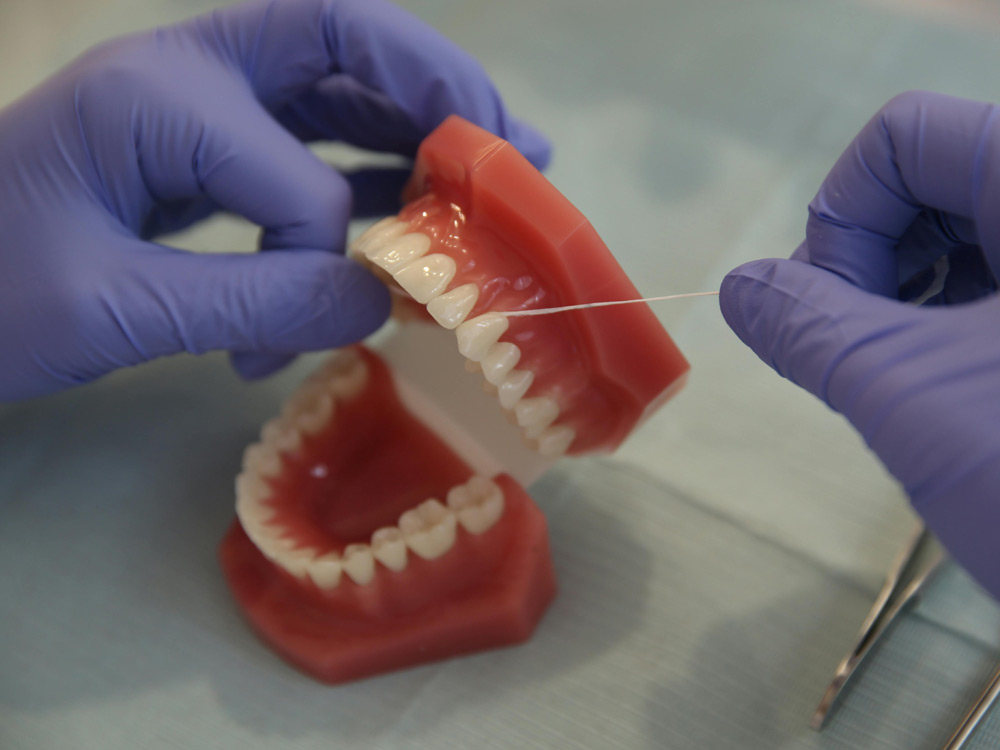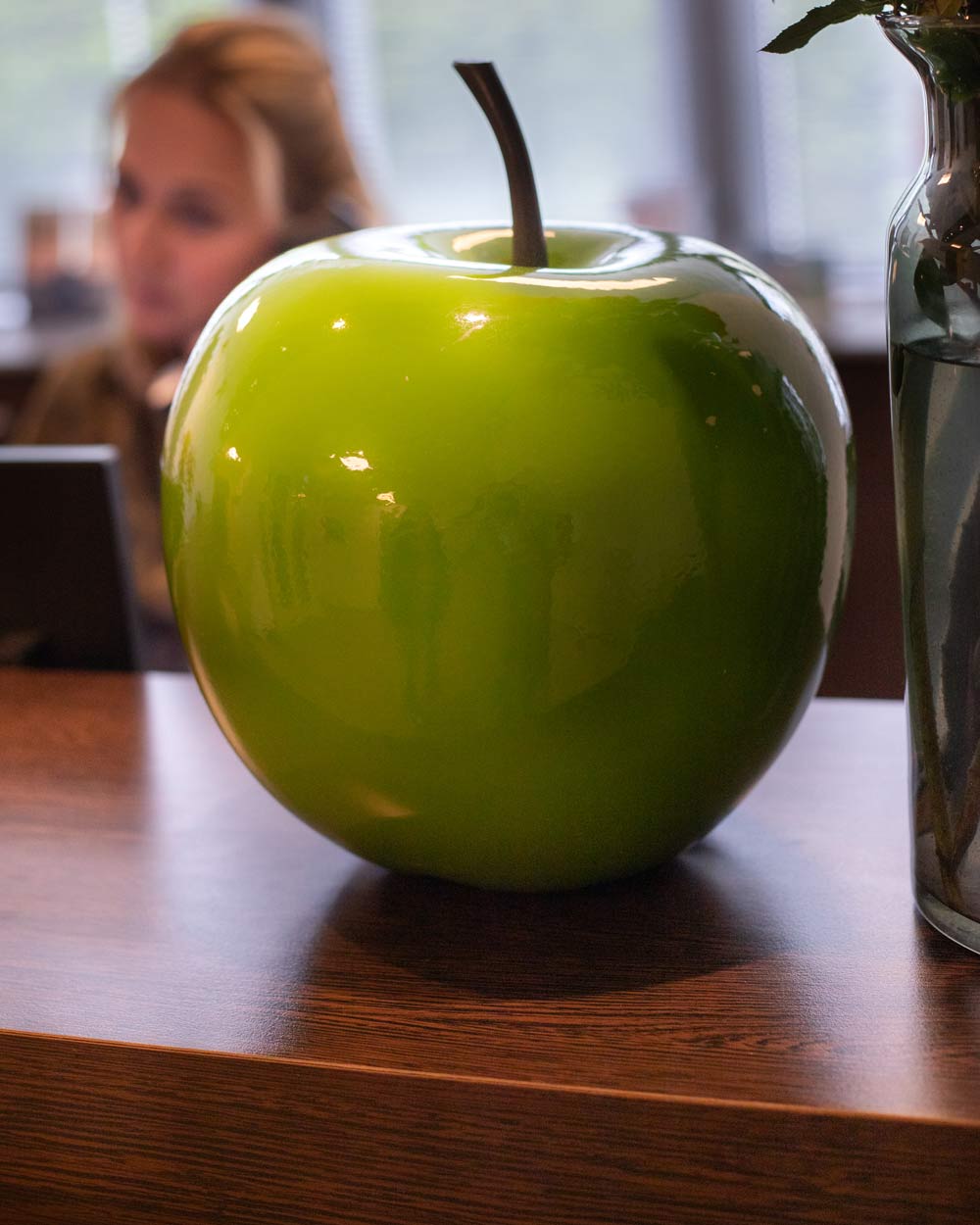From your own teeth to dentures
An immediate denture is a prosthesis that is placed immediately after the removal of the last teeth.
After the dentist has had to decide to extract your last teeth, the denture takes an impression of your jaws. This impression serves as the basis for fabricating the immediate denture.
The shape that teeth naturally have fits the face best. We will consult with you about your wishes regarding the color and position of the teeth. Natural and beautiful fit the shape of your face.
Immediately after removing the teeth, the immediate denture is placed in the mouth. Thus, the prosthesis also acts as a wound dressing.
The first day you are not allowed to remove your prosthesis. After 1 day, you will return to the dentist, who will remove the prosthesis for the first time, clean and check the mouth and relieve pressure spots. For the first few hours after tooth extraction, saliva may be red. This is because the wounds are still bleeding a bit, but this will stop fairly soon.
There is a small chance that the bleeding will not go away, in which case notify your dentist. Your ability to chew is a little impaired at first, and it is best to eat soft foods at first.
As the jaw heals, the jaw shrinks and the denture becomes progressively looser. In the meantime, the prosthesis may therefore be adjusted with a (temporary) liner. You may also temporarily use an adhesive to give the prosthesis more grip.
After 2 months to half a year , when the gums have recovered and the jawbone has shrunk , a rebase or a final prosthesis can be manufactured.
Full prosthesis
Full dentures or dentures replace natural teeth when they have been lost due to caries or periodontitis. Dentistry distinguishes between full dentures and partial dentures such as plate dentures and frame dentures. Basically, the denture lies loose on the oral tissue. Due to saliva, the plastic sticks to the tissues, the mouth muscles can be helpful in retention and hold .
The hard, rigid plate must function in the mouth of which, in a sense, everything is movable. Often this causes problems.
It is usually the lower dentition that gives complaints. The supporting surface of the toothless or edentulous mandible is much smaller.
With the advent of implantology, it has become easier to create retention. The Full denture is then clicked onto press studs or a bar. After authorization, the click denture is reimbursed 100% from the basic insurance. However, there is a statutory co-payment of EUR 125.00 per jaw. And attention should be paid to the annual deductible. A full denture is reimbursed 75% from the basic insurance. If you have supplementary insurance, part of the 25% co-payment will also be reimbursed. For the fitting of a (full) denture 5 to 6 appointments are necessary:
First impression
First impressions are made with standard trays and rigid alginate.
Individual impression
From the first impressions a plaster model is made in the dental laboratory and an individual tray is manufactured on it. With this impression a very precise second impression is made .
The dentist uses this to determine the position of the lower jaw in relation to the upper jaw. This is called bite determination. Also, together with the patient, a color is chosen and wishes for the shape of the teeth are discussed. At the next visit there is already an example of the front to try on.
Arrowhead registration and front fit
This serves to establish the relationship of the lower jaw to the upper jaw. The front pass can also be checked to ensure that it is straight and the length is correct.
Fitting in wax
All teeth can now be fitted. If everything is in order and the patient is satisfied, the denture can be pressed.
Placing
After placing, there is a follow-up check to relieve any sore spots. A new denture always takes some getting used to in the beginning. Painful spots may occur, however, these are easily remedied by the dentist.
Repairs and rebasing
Rebase (filling)
The condition of your jaw changes, which also changes the fit of your dentures. There is space between your dentures and your jaw. This causes the dentures to no longer press evenly on the jaw, resulting in pain, loose dentures or fractures. Don’t wait too long and make an appointment. We apply, on the inside of the dentures, a “lining” so that your dentures fit well again on the gums and are no longer loose. The costs for a rebasing (filling) are, in case of a complete upper and/or lower denture, 100% reimbursed from the basic health insurance.
Repair
Do you have a repair? Tooth out, crack or is your denture broken, we repair your dentures during working days the same day. The costs for a repair of complete upper and/or lower dentures are covered for 100% under the basic health insurance.
Clicking teeth on implants
Dentures that snap onto implants are called click dentures or overdentures. As the jaw shrinks, dentures can become loose and no longer have sufficient hold on the jaw.
For a loose fitting denture and to prevent further shrinking of the jaw, a click denture can be a solution. In the (lower) jaw, generally two implants are placed. In the upper jaw usually 4 implants are placed. On these implants pressure buttons, or a bar-sleeve construction can be placed. A click denture is firmly attached but can also be removed for cleaning. Because click dentures move much less, food hardly gets under the denture edge and, in addition, research also shows that denture wearers are able to chew better.With click dentures in the upper jaw, the plastic in the area of the palate is removed, restoring much of the taste. Click dentures must be requested by the dentist from the health insurance company. After authorization, they are 100% reimbursed by the basic insurance. The statutory contribution is 125, – euro per jaw.
The benefits of click dentures
A click denture sits nice and secure.
This gives click dentures distinct advantages over dentures.
For example, you will find that eating is much easier than with dentures.
Especially biting with the front teeth is a lot easier.
You can also talk and laugh freely again without worrying about the dentures coming loose.
Click dentures are therefore good for your self-confidence.
Because click dentures do not require a whole plate, it is possible to keep the palate free.
Partial plate or frame prosthesis
A plate or frame denture, also called a partial denture, is a replacement of one or more teeth.
A good solution if your lost teeth are not replaced by a bridge, crown or implant.
You can take the denture out of your mouth.
Bridges, crowns and implants do not.
Those are fixed in the mouth.
The partial denture
The plate denture is made of a pink, gum-colored resin.
In it, the artificial teeth are anchored.
The entire plate prosthesis rests on the mucosa of the mouth.
It may be attached to remaining teeth with anchors.
The frame prosthesis
The frame denture is made of metal.
A gum-colored synthetic resin is applied to the metal.
On top of this are the artificial teeth or molars.
The frame denture rests mainly on part of the remaining teeth or molars.
Depending on the design, the frame denture also rests more or less on the mucosa.
The dentist can attach the frame denture in two ways.
Either with metal anchors that clamp around a few teeth or with a type of clasp.
With a clasp, one side is attached to a crown, tooth or molar and the other side is attached to the frame denture.
You can slide the frame denture into the clasp in this way.
The clasp is usually on the inside of the teeth and is therefore not visible from the outside.
Anchors are often slightly visible.
Your denture technician at Al Dente will be happy to inform you with illustrations and examples about the best solution for a removable appliance for you.






